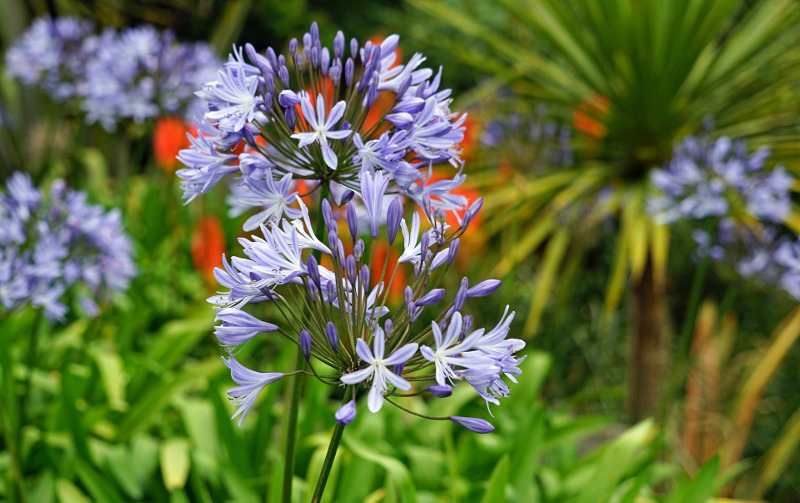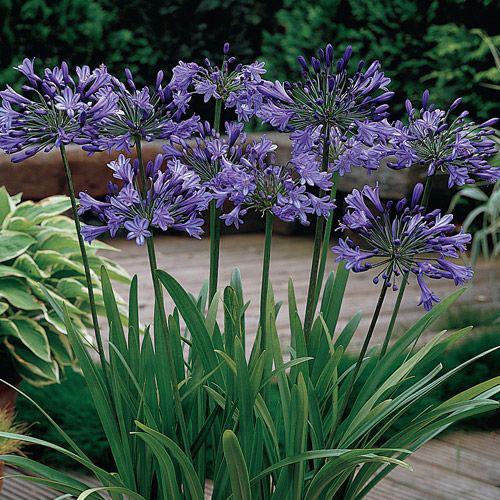Agapanthus Varieties: Choosing the Best for Your Landscape
Agapanthus Varieties: Choosing the Best for Your Landscape
Blog Article
Releasing the Secret to Effective Agapanthus Growing: Idea for a Flourishing Garden
In the realm of gardening, cultivating agapanthus efficiently calls for a strategic approach that includes numerous aspects of plant care. By recognizing the subtleties of agapanthus growing, one can produce a setting where these plants flourish and bloom perfectly.
Planting Agapanthus: Ideal Practices
When planting Agapanthus, proper soil prep work is necessary for making sure successful growth and growth of these lovely blossoms. Agapanthus, commonly called Lily of the Nile or African lily, flourishes in well-draining dirt with a slightly acidic to neutral pH degree - Agapanthus. Prior to growing, it is critical to change hefty clay soils with raw material such as compost or peat moss to enhance drainage and give vital nutrients for the plants
To plant Agapanthus, select a place that gets full sunshine to partial color, as this will promote healthy and balanced growth and plentiful blooming. Dig an opening twice the diameter of the plant's origin ball and position the Agapanthus at the same deepness it was previously expanding. Carefully backfill the opening with dirt, weighing down firmly to get rid of any air pockets around the roots.
Water the freshly grown Agapanthus thoroughly and continue to keep the dirt uniformly moist, specifically throughout the plant's active expanding season. Agapanthus. Applying a balanced plant food once a month can better sustain the plant's growth and blooming. By following these best techniques for planting Agapanthus, you can create a spectacular screen of these captivating flowers in your garden
Suitable Dirt Issues for Agapanthus
For optimal growth and growing success of Agapanthus plants, ensuring the soil conditions are perfect is important. Agapanthus prospers in well-draining soil with a somewhat acidic to neutral pH degree ranging from 6.0 to 7.0. This kind of dirt allows for adequate water drainage, avoiding waterlogging which can result in root rot. To improve soil water drainage, take into consideration adding natural issue such as compost or peat moss when preparing the growing website. Moreover, Agapanthus likes dirt that is abundant in nutrients, so incorporating a balanced fertilizer throughout the growing season can advertise healthy and balanced development and lively flowers.

Watering and Feeding Tips
To make certain healthy growth and dynamic blossoms, proper watering and fertilizing strategies are important for effective Agapanthus growing. Agapanthus plants gain from routine watering, specifically during the growing period. It is advised to water deeply once a week, guaranteeing the soil is moist but not saturated. During hot weather or in pots, more frequent watering may be necessary to stop the dirt from drying out completely.
When it involves fertilizing Agapanthus, a balanced plant food with equal parts nitrogen, phosphorus, and potassium can be applied in the spring to advertise healthy and balanced growth and flowering. Slow-release plant foods are suitable for offering nutrients gradually over an extensive period. Avoid over-fertilizing, as this can lead to too much foliage development at the expense of blossoms.
Additionally, integrating raw material like garden compost into the dirt can improve nutrient degrees and enhance dirt structure, assisting in the general wellness of the Agapanthus plants. By following these watering and feeding tips, garden enthusiasts can ensure their Agapanthus plants flourish and generate sensational screens of blossoms.
Pruning and Deadheading Techniques
Correct trimming and deadheading techniques play a crucial role in maintaining the wellness and aesthetic appeals of Agapanthus plants, complementing the crucial practices of watering and feeding for effective cultivation. Pruning Agapanthus entails removing invested blossom heads, dead or yellowing fallen leaves, and overall shaping of the plant to advertise better growth. Deadheading, the procedure of removing faded from this source blossoms, not just boosts the plant's look but likewise urges further flowering.
When deadheading Agapanthus, it is advisable to trim off the blossom stem at the base using sharp, tidy shears. This procedure redirects the plant's power from seed production back right into origin and foliage development, advertising a much healthier and more robust plant. Normal deadheading can extend the flowering period of Agapanthus and avoid self-seeding, which can cause congestion.
In regards to pruning, Agapanthus typically gain from a light trim after blooming to clean up the plant and urge fresh development. Cutting back the spent blossom stems and eliminating any kind of dead or damaged vegetation helps maintain the plant's vitality and general look. Nevertheless, it is important to stay clear of reducing right into the crown of the plant, as this can damage its health.

Protecting Agapanthus From Pests and Diseases
Implementing effective pest and disease monitoring methods is essential to safeguarding the health and wellness and vigor of Agapanthus plants in growing. Agapanthus are generally durable plants, however they can still succumb different parasites and conditions if not correctly cared for. his comment is here One usual insect that influences Agapanthus is the Agapanthus borer, a caterpillar that tunnels right into the plant, creating damage to the fallen leaves and blossoms. To avoid infestations, routine assessment of the plants is crucial. If borers are detected, they can be manually gotten rid of, or insecticidal soap can be utilized as a control action.
In addition to bugs, Agapanthus are vulnerable to diseases such as root rot and fungal leaf spots. By remaining watchful and dealing with insect and illness issues quickly, gardeners can help their Agapanthus flourish and thrive.

Verdict
In final thought, effective cultivation of agapanthus requires appropriate growing methods, perfect dirt problems, ample watering and fertilizing, routine pruning and deadheading, and protection from diseases and pests. By adhering to these tricks and suggestions, gardeners can guarantee a prospering garden full of lovely agapanthus blossoms. Agapanthus. Remember to maintain consistent care and attention to detail to promote the health and wellness and long life of these stunning plants
When growing Agapanthus, correct dirt prep work is crucial for ensuring effective development and development of these stunning flowers.Water the freshly planted Agapanthus completely and continue to keep the soil evenly damp, particularly during the plant's energetic expanding season.For optimal growth and growing success of official site Agapanthus plants, guaranteeing the soil problems are suitable is important. When growing or hair transplanting Agapanthus, ensure the soil is well-prepared to give the essential structure for the plants to establish themselves successfully. One common pest that influences Agapanthus is the Agapanthus borer, a caterpillar that passages into the plant, triggering damage to the leaves and flowers.
Report this page